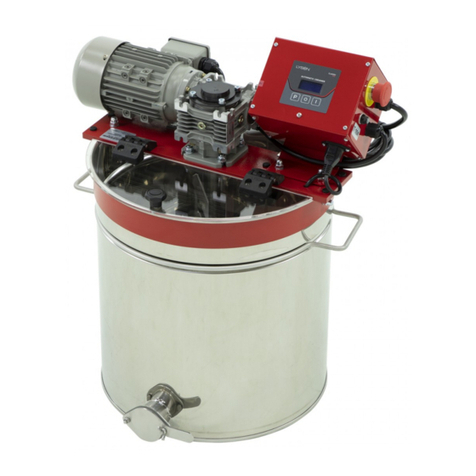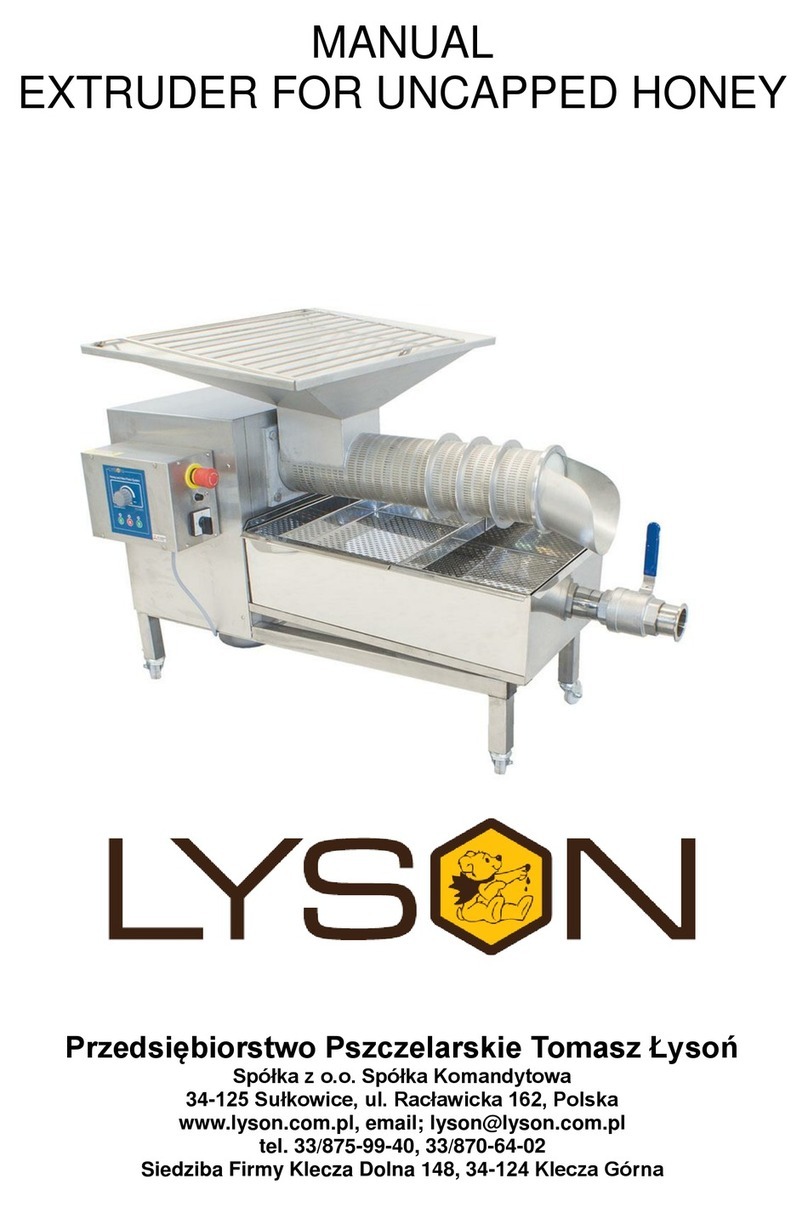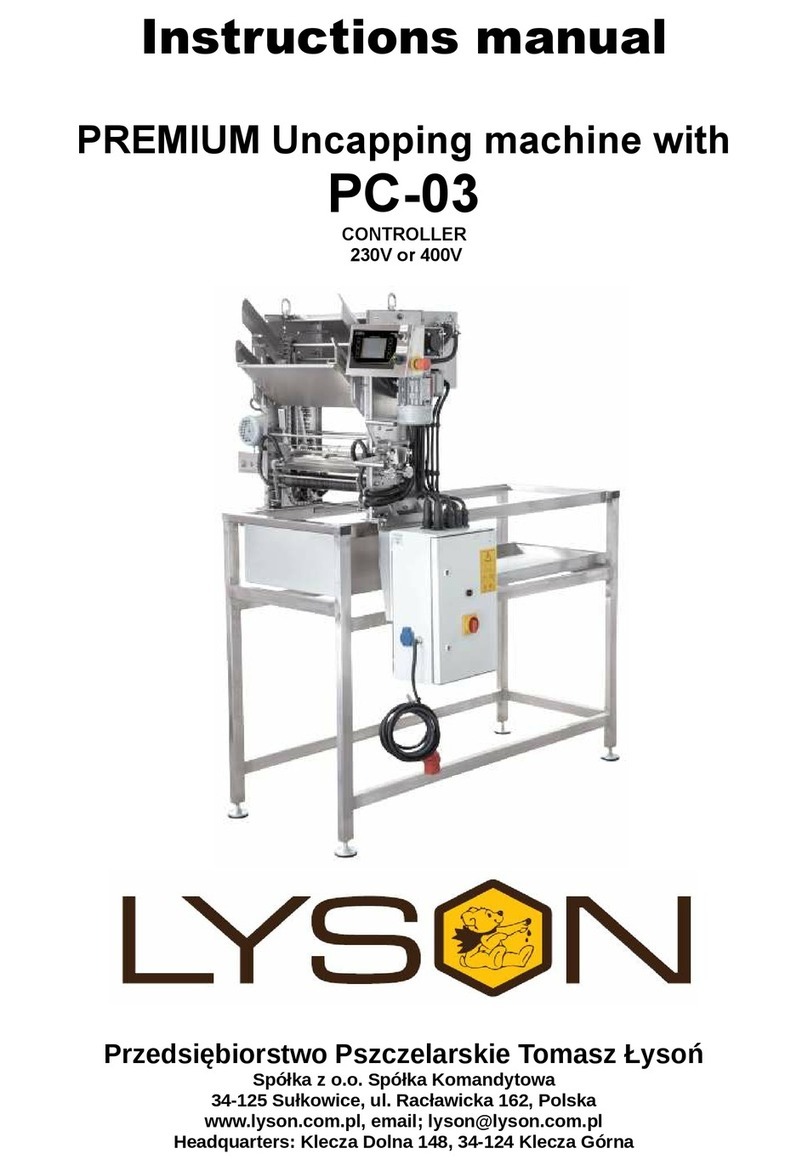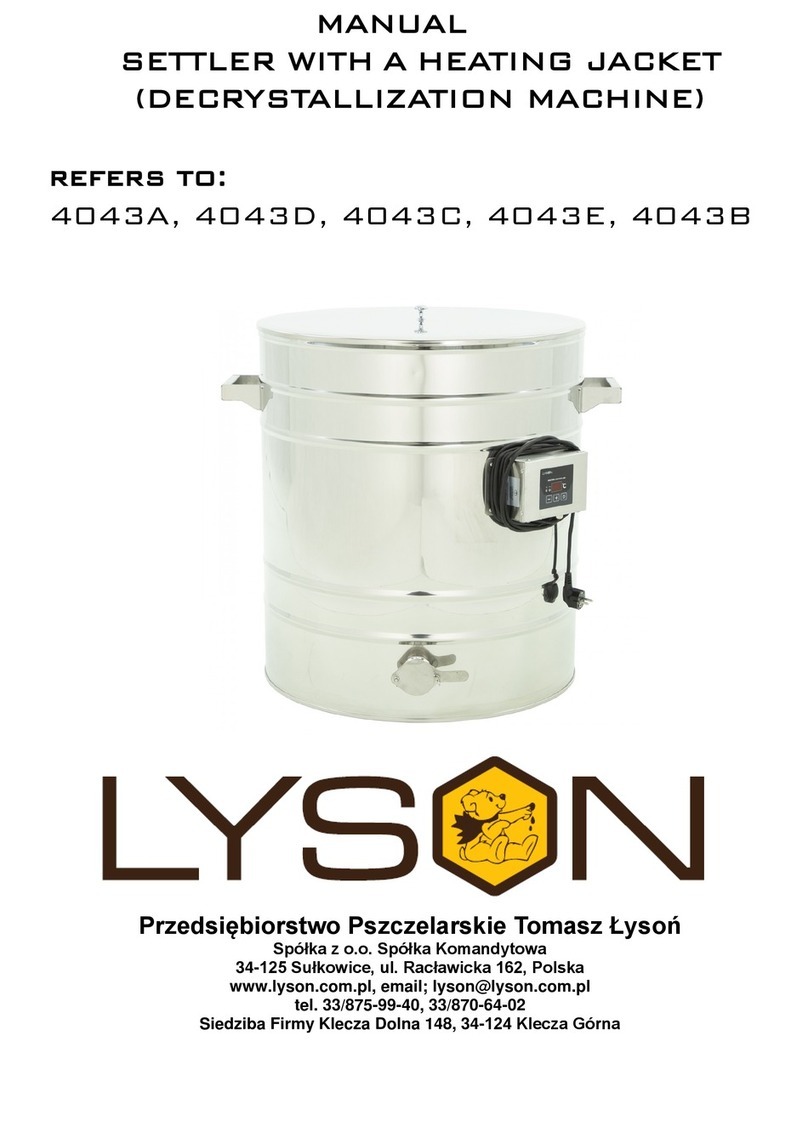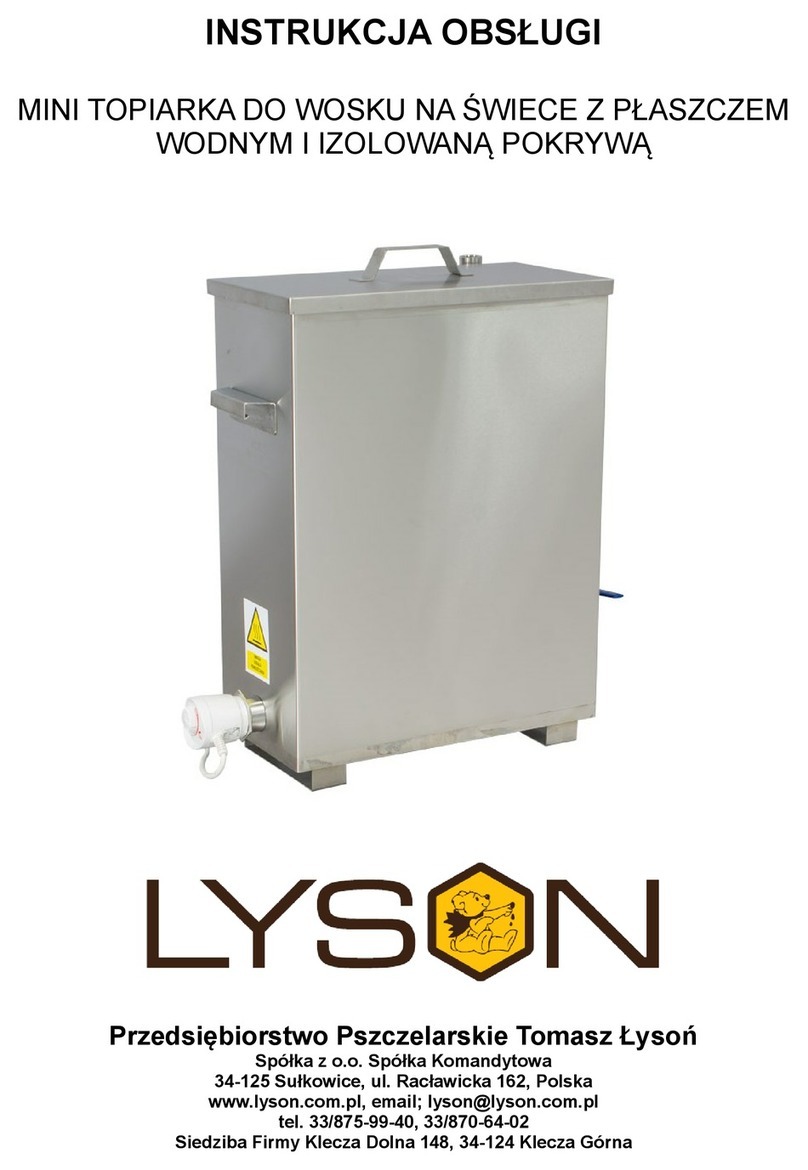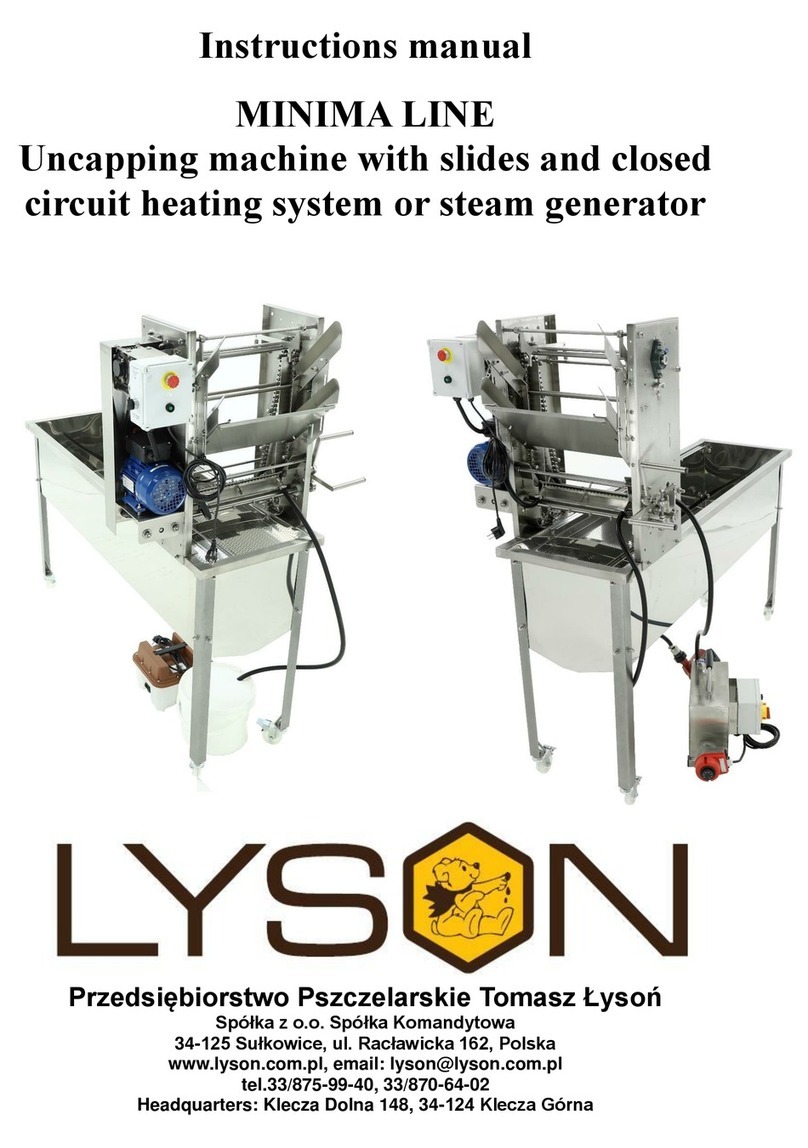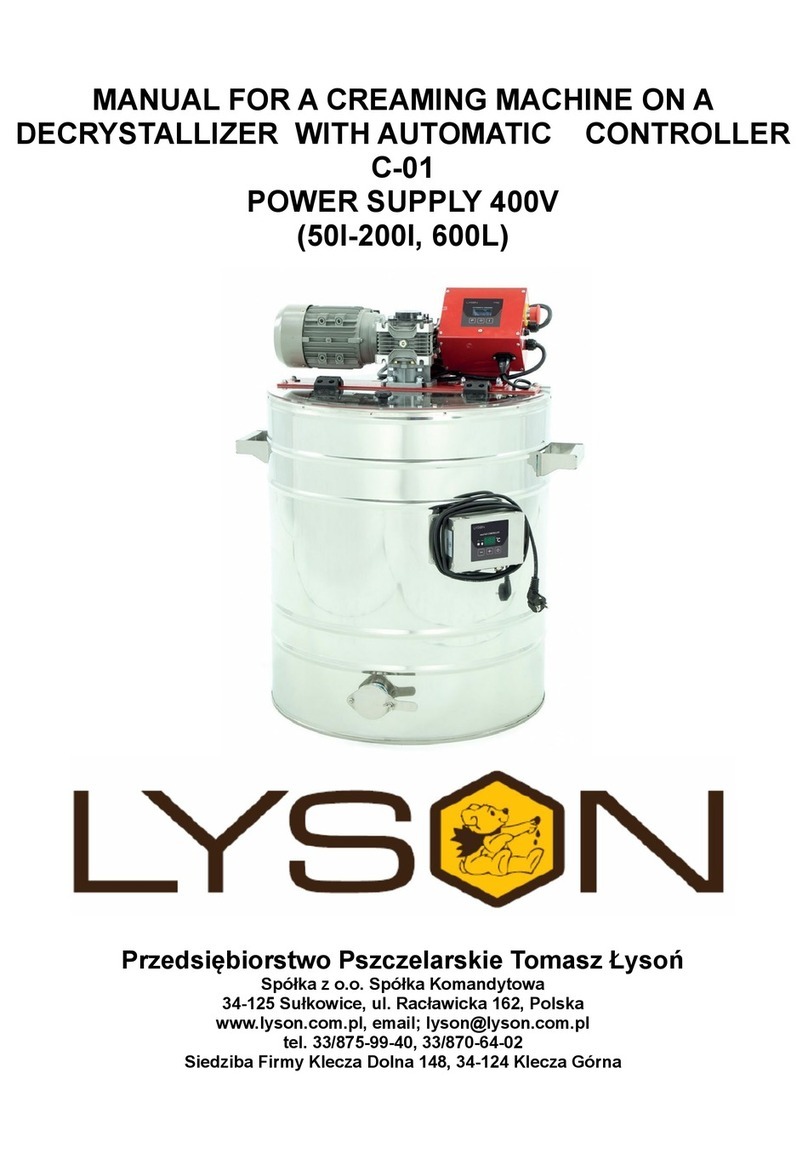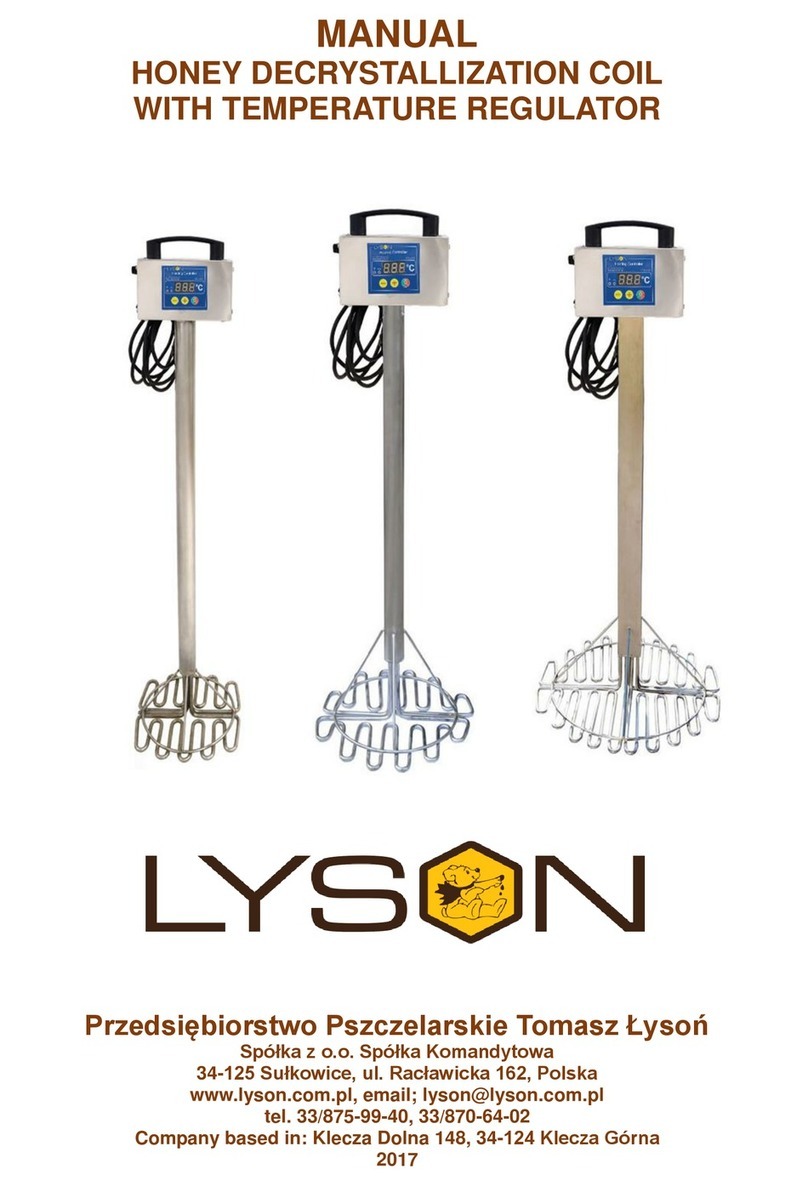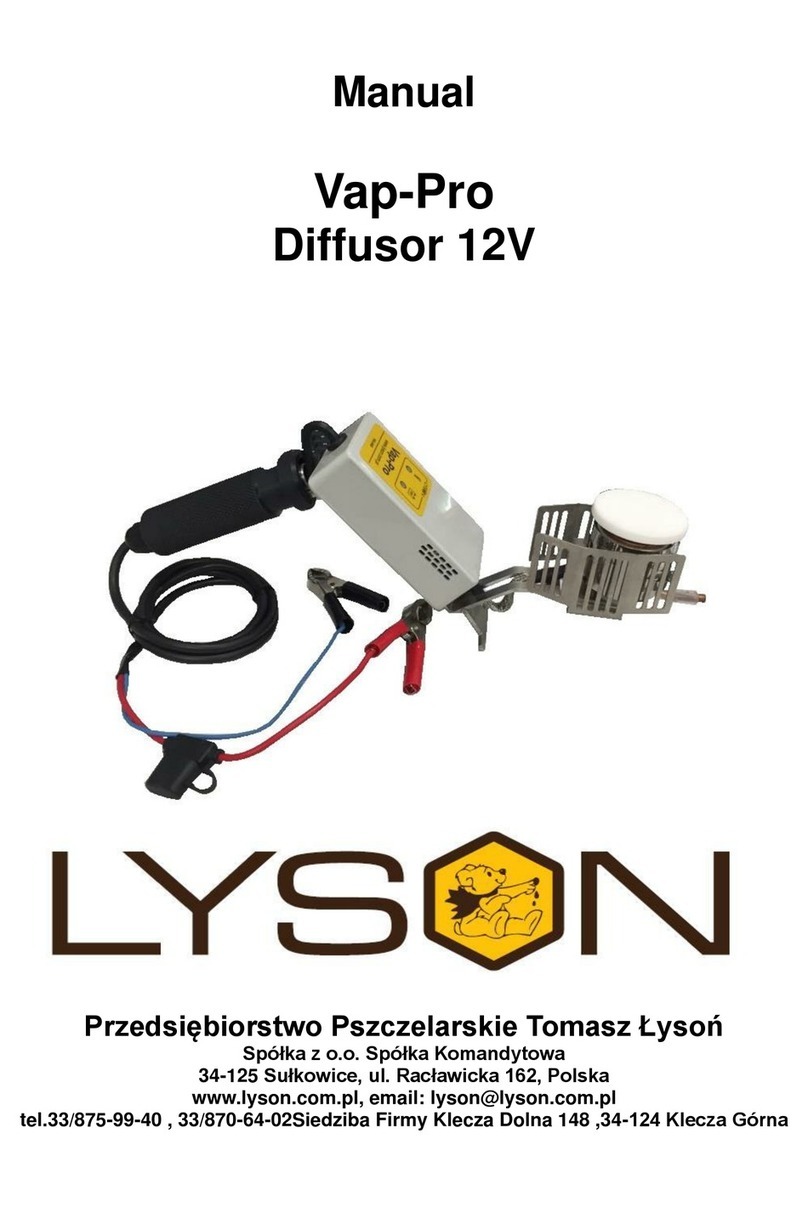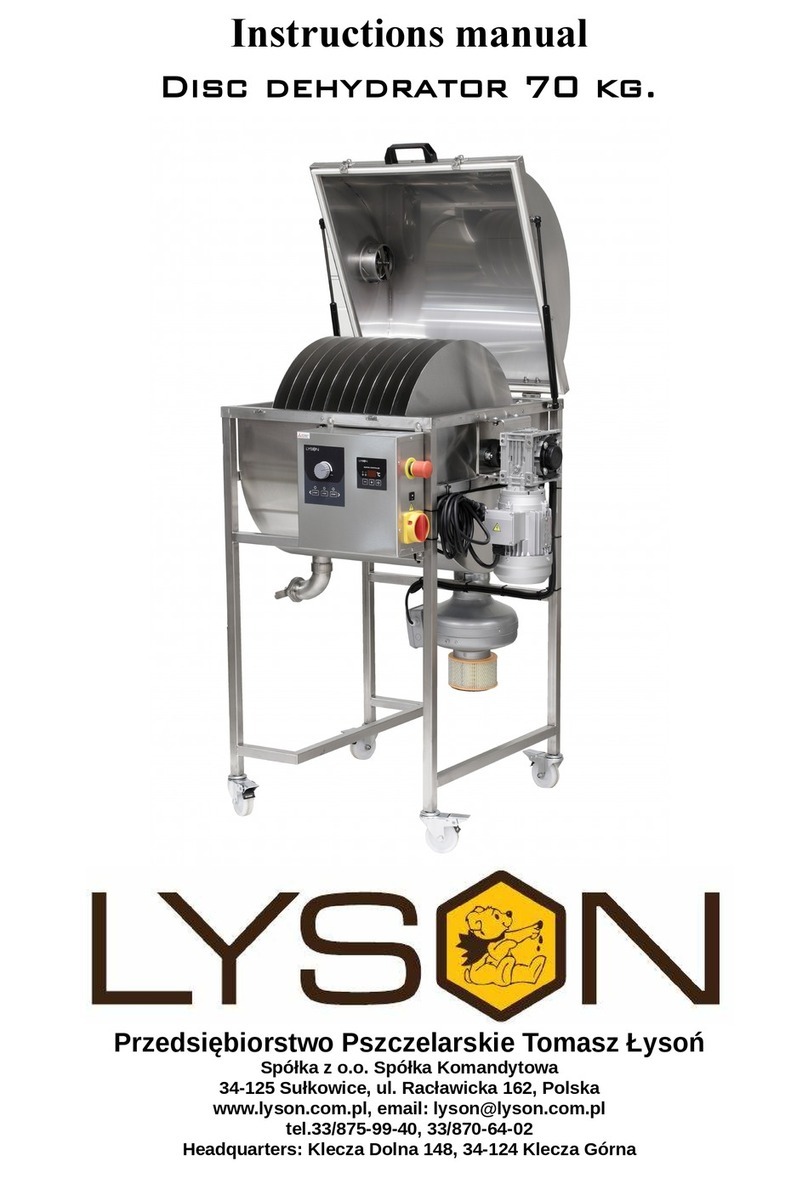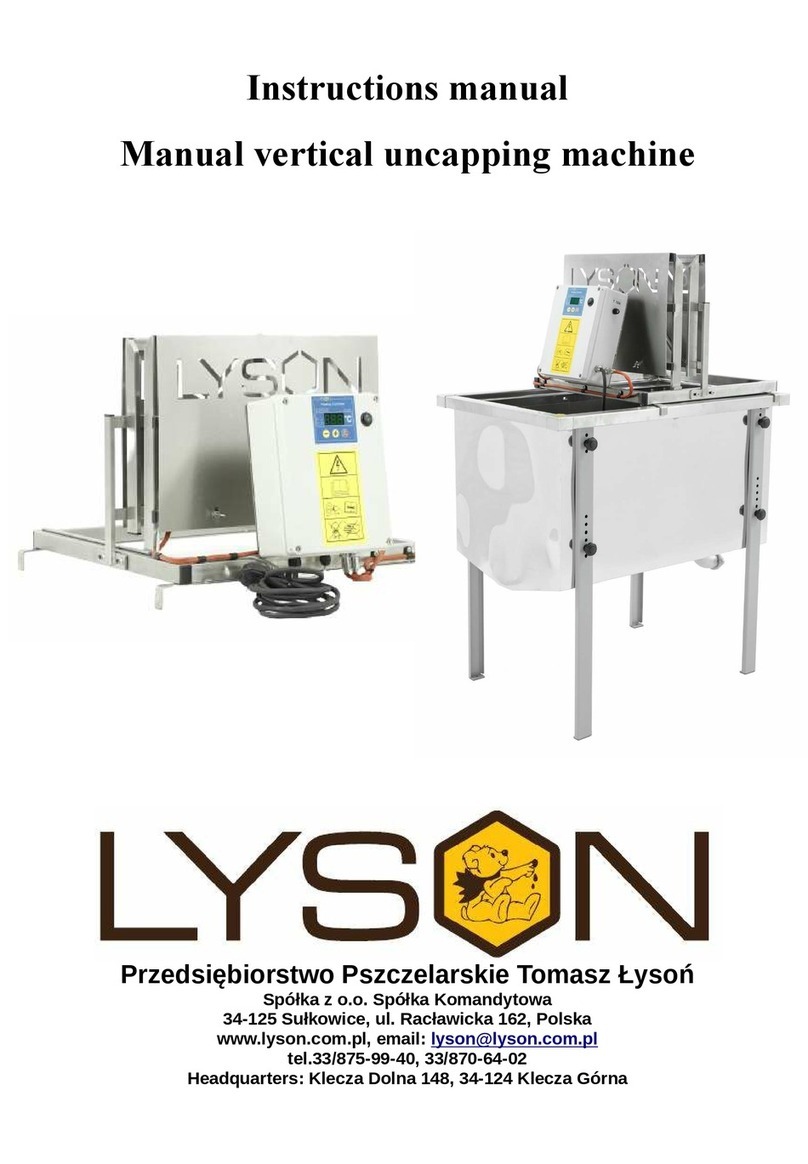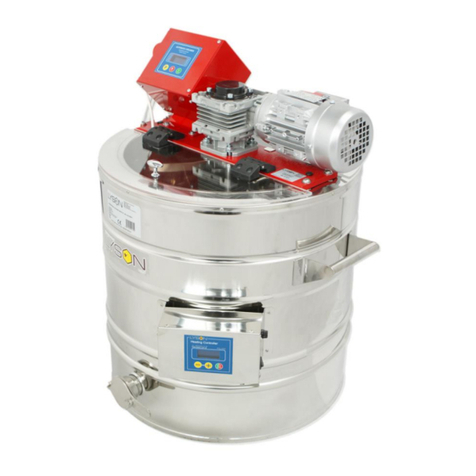WYTŁACZARKA DO ODSKLEPIN
ZASILANIE 400V
Przed rozpoczęciem użytkowania urządzenia przeczytać
instrukcję użytkowania i postępować według wskazówek w niej
zawartych. Producent nie odpowiada za szkody spowodowane
użytkowaniem urządzenia niezgodnie z jego przeznaczeniem
lub niewłaściwą jego obsługą.
1. OGÓLNE ZASADY BEZPIECZEŃSTWA
UŻYTKOWANIA WYTŁACZARKI DO
ODSKLEPIN
1.1. BEZPIECZEŃSTWO ELEKTRYCZNE
a) Urządzenie należy podłączyć do gniazda z uziemieniem o
napięciu określonym na tabliczce znamionowej wyrobu.
b) Instalacja elektryczna zasilająca musi być wyposażona w
wyłącznik różnicowo-prądowy o znamionowym prądzie
zadziałania nie wyższym niż 30mA. Okresowo należy
sprawdzać działanie wyłącznika różnicowo-prądowoego.
c) Okresowo sprawdzaj stan przewodu zasilającego. Jeżeli
przewód zasilający nieodłączalny ulegnie uszkodzeniu i
trzeba go wymienić, to czynność ta powinna być
wykonana u gwaranta lub przez specjalistyczny zakład
naprawczy albo przez wykwalifikowaną osobę w celu
uniknięcia zagrożenia. Nie używać urządzenia, gdy
przewód zasilający jest uszkodzony.
d) W przypadku uszkodzenia urządzenia, w celu uniknięcia
zagrożenia, naprawę może przeprowadzić tylko
specjalistyczny zakład naprawczy albo wykwalifikowana
osoba.
e) Zabrania się ciągnąć za przewód zasilający.
Przewód zasilający należy trzymać z dala od źródeł ciepła,
ostrych krawędzi oraz dbać o jego dobry stan.
1.2. BEZPIECZEŃSTWO UZYTKOWANIA
a) Niniejszy sprzęt nie jest przeznaczony do użytkowania
przez osoby (w tym dzieci) o ograniczonej zdolności
fizycznej, czuciowej lub psychicznej lub osoby nie mające
doświadczenia lub znajomości sprzętu, chyba, że odbywa
się to pod nadzorem lub zgodnie z instrukcją użytkowania
sprzętu, przekazanej przez osoby odpowiadające za ich
bezpieczeństwo.
b) Podłoże, na którym stoi urządzenie powinno być suche!
c) Kratownica zabezpieczająca wsyp powinna być
zamknięta podczas pracy wytłaczarki !
d) Nie należy przestawiać wytłaczarki podczas jej pracy.
e) Należy chronić silnik oraz sterowanie przed wilgocią;
(również podczas przechowywania)
f) Nie korzystaj z urządzenia w pobliżu materiałów
łatwopalnych.
g) Zabrania się prowadzić jakichkolwiek prac
konserwacyjnych podczas pracy urządzenia.
h) Wszystkie osłony podczas pracy muszą być trwale
przymocowane do urządzenia.
i) W przypadku jakiegokolwiek zagrożenia należy
bezzwłocznie użyć wyłącznika bezpieczeństwa.
Ponowne uruchomienie urządzenia może nastąpić po
wyeliminowaniu zagrożenia.
j) Urządzenie może być uruchamiane tylko wewnątrz
pomieszczeń. Urządzenie nie jest przystosowane do
pracy na zewnątrz pomieszczeń.
Zakaz naprawiania urządzenia w ruchu
2. CHARAKTERYSTYKA WYTŁACZARKI
2.1. WYTŁACZARKA DO ODSKLEPIN
Urządzenie występuje w trzech wydajnościach
50, 100, 200 kg/h
Maszyna przeznaczona jest do oddzielania miodu i
prasowania odsklepin w sposób mechaniczny.
Proces ten odbywa się wewnątrz perforowanego cylindra gdzie
obracający się moduł separująco-prasujący odciska miód,
który przedostaje się otworami pomiędzy wałem separującym
a perforowaną blachą i ścieka na sito znajdujące się pod nim,
natomiast pozostały wosk jest przesuwany i prasowany przez
ślimak wewnątrz wyciskarki po czym zostaje wysuwany na
zewnątrz. Tak uzyskujemy suchy wosk w postaci gotowej do
przetopienia.
2.2. SCHEMAT WYTŁACZARKI
1 2
4 3 5
